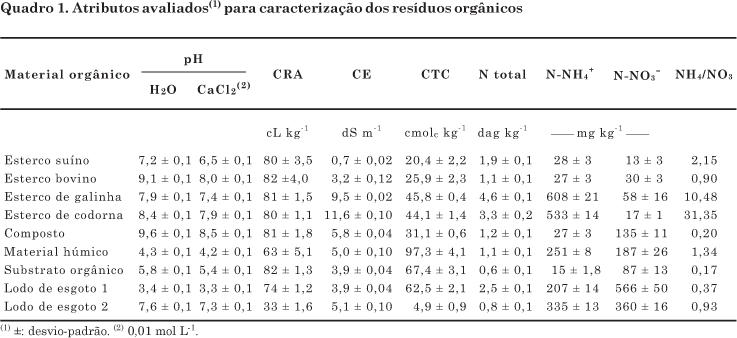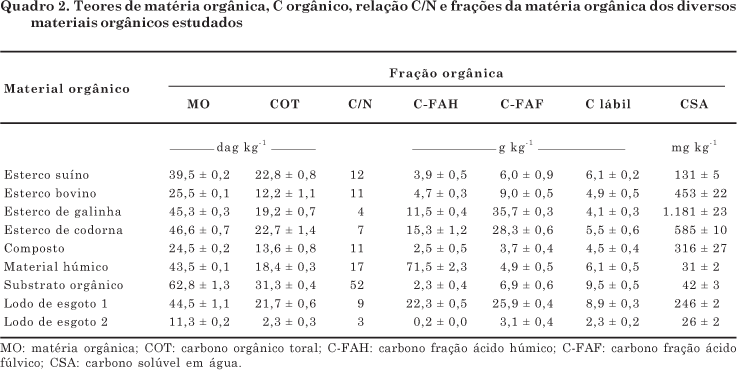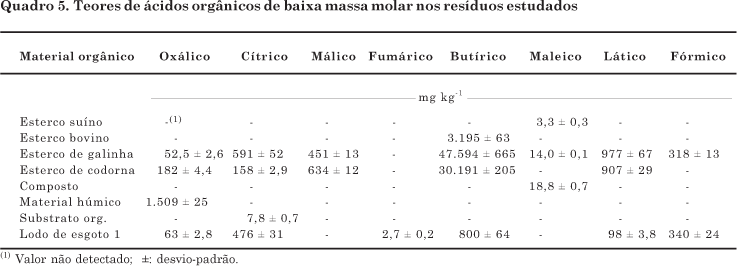The humification degree and the chemical nature of organic residues are essential factors controlling their degradation and nutrient release. To characterize the organic matrix, samples of sewage sludge, poultry, pig, cattle and quail manure, besides commercial compost, organic substrate and humic material were analyzed for: pH, electric conductivity, cation exchange capacity (CEC), water retention capacity, concentration of total N and mineral N, organic matter, total organic carbon (TOC) and the TOC fractions: humic acid C-fraction; fulvic acid C-fraction, water soluble C, labile-C and concentration and diversity of low mass molecular organic acids. The higher the humic acid C-fraction content, the greater was the CEC of the organic residues. Based on the humification index (HI), humification ratio (HR), the CEC and their respective critical values (19 %, 28 % and 67 cmol c kg-1), to separate decomposed material from material in decomposition, the pig, cattle, poultry and quail manures and the organic compost and sludge sewage 1 were classified as not completely decomposed residues. Labile-C was not appropriate to predict the bioavailability of the studied residues. The concentration of low molecular weight organic acids was higher in poultry and quail manure.
cation exchange capacity; humic substances; nitrogen; water-soluble carbon







